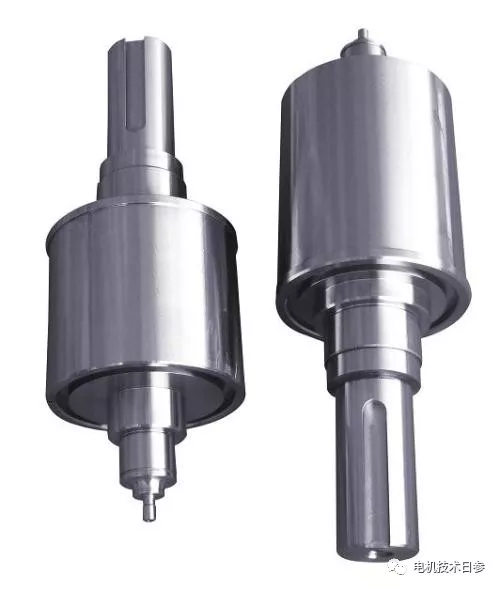Discussion on motor rotor sawtooth defects and motor performance
The stator and rotor cores of the motor are made of laminated sheets. In theory, the sheets should be stacked neatly, and the slots of the cores can be neat and smooth after lamination. However, in the actual production and processing process, the slots of any core will be uneven to varying degrees. For the stator core and the rotor core of the wound motor, the winding must be embedded in the core slots. If the slots are not smooth, the cross-section of the core slots will become smaller, making it difficult to embed the wire during winding processing, and in severe cases, the slot insulation will be damaged. For the cast aluminum rotor core, the unevenness in the slots is equivalent to reducing the cross-sectional area of the rotor aluminum bar, which has a greater impact on the performance of the motor.
If the rotor core is not neat, for an open slot rotor, after the rotor is turned, you will see obvious serrations or even twisting on the slots. For a closed slot rotor, although no obvious defects can be seen on the rotor surface, it actually has a greater impact on the performance of the motor.
Compared with other processes, the aluminum casting process is a relatively hidden project. The quality of the rotor must be guaranteed by standardized operating procedures and perfect molds.
The squirrel cage rotor of ordinary cage asynchronous motor generally adopts semi-closed slots. Here, the high-efficiency motor uses closed slots for two reasons: first, it reduces the air gap magnetic resistance, the exciting current is relatively small, and the copper loss is also small; second, it can effectively reduce the additional core loss caused by the pulsation of the magnetic permeance harmonic on the core surface of the motor. Obviously, the efficiency improvement effect of the dual factors is quite lethal, so various manufacturers have tried to use closed rotor slots on a large scale.
● Although the use of closed slots in the rotor can reduce the stator copper loss and stray loss of the motor, the extent of reduction is positively correlated with the closed bridge arch height or the magnetic bridge thickness.
● The thickness of the rotor closed slot magnetic bridge is too large, the rotor leakage reactance increases greatly, the power factor will tend to deteriorate, resulting in an increase in load current, and an increase in stator and rotor copper and aluminum losses, offsetting the efficiency improvement or even causing the efficiency to decrease.
● The rotor adopts closed slots, and the leakage resistance increases, which reduces the starting current, but at the same time, the starting torque and maximum torque also decrease. Therefore, when using closed slots, the changes in the starting and overload capacity data should not be lower than the limit allowed by the standard.
For cast aluminum rotor motors, the purity of aluminum is generally required to be no less than 99.5%. We may ask whether the aluminum used in the motor rotor is high-purity aluminum. Ms. will have a brief discussion with you.
Compared with traditional primary processing aluminum ingots, the production of high-purity aluminum has higher product added value and profit margins. High-purity aluminum refers to aluminum with a content of not less than 99.999% (5N). High-purity aluminum has many excellent properties and is widely used.





























 XINDA
XINDA